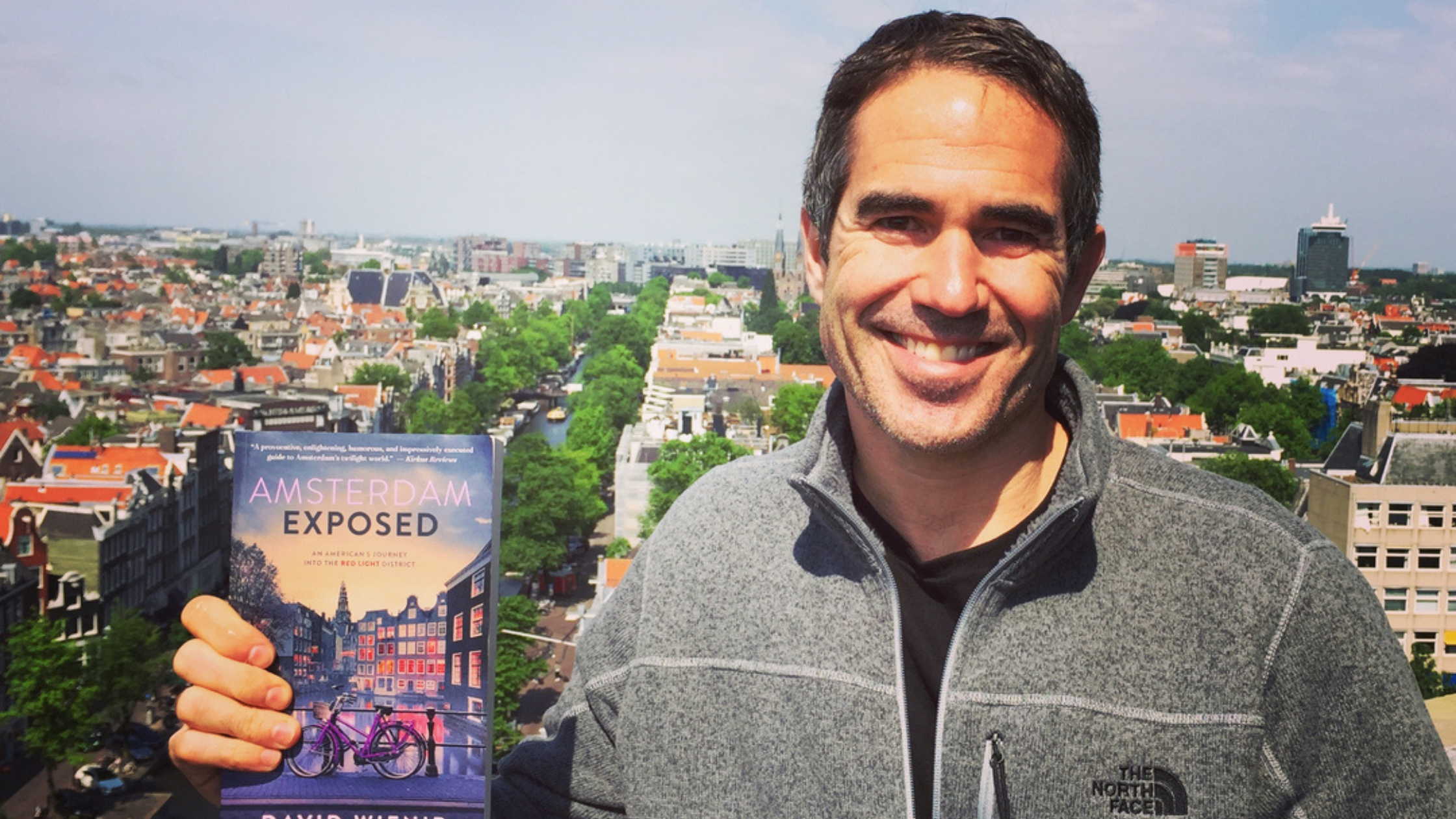Free Trip to Amsterdam (Without Leaving the Couch): A David Wienir Guest Blog
I began working on Amsterdam Exposed as the events happened, and it has taken me almost two decades to share it with the world.
My life had evolved, and my career had taken me into corporate America, where I knew many would be quick to judge a book of this nature, given the subject matter and everything that comes with it. I would be judged, too. There is nothing corporate America likes less than someone trying to change the status quo, or worse, someone who strays from the herd.
For those politically correct readers, or those easily offended, it is my sincere hope that you will love this book, but be forewarned it is very real. I didn’t soften the edges – at all. To do so would be inauthentic, and defeat the purpose. I saw what I saw. What happened, happened. What makes the book most provocative is that it neither glorifies prostitution nor condemns it. It doesn’t paint the world in black-and-white, as so many are prone to do. Radical feminists may dismiss it, as may those who pretend prostitution is just another job, and I’m fine with that. I didn’t write it to please everyone. Rather, I wrote it to provide dignity to the women who, for whatever reason, end up in the district, and to help reshape a debate that extends far beyond Amsterdam and to the very core of humanity itself.
Take a look for yourself with an excerpt from Amsterdam Exposed:
Just like many New Yorkers have never visited the Statue of Liberty, and many Angelinos have never checked out Griffith Observatory, many Dutch have never toured the red light district. As Oliver followed me down Warmoesstraat, he was on edge. I was too. We made a left on Wijde Kerksteeg and found ourselves standing in front of the Oude Kerk. It was there that my journey into the district would officially begin.
The district is sprawling, covering roughly a square mile. Once inside, the rest of the world melts away. One enters a new reality. The district isn’t hidden from the city but sits in its most accessible part. One need not venture far to find it. While seemingly godless, it’s home to many of Amsterdam’s most beautiful structures including the Oude Kerk, Amsterdam’s oldest building, built over 800 years ago and consecrated in 1306.
It’s also filled with apartments, cafes, bars, and even a preschool. It’s a place of contrasts— where worlds collide and have for centuries. The old church looms large over the district like a guardian or spiritual anchor. That night it had an imposing presence, but a comforting one as well.
Prostitution has existed in Amsterdam since the sixteenth century. It was legalized in 1810. The change was based on the understanding criminalization does more harm than good. As women in windows were considered self-employed, their activities fell within the law. So, that’s where most women went. All forms of exploitation, such as brothels, remained illegal for another 189 years.
Since brothels didn’t legally exist, they couldn’t be regulated and were largely home to foreign and underage women. Once that changed, the same health and safety protections afforded women in the windows were extended to those in the brothels as well.
The origins of the term red light district remain unclear. Some claim it’s from the early twentieth century when railroad workers used red lanterns for signaling. They would leave their lanterns outside a girl’s door when visiting, indicating she was busy.
Others say the term dates back to the 1890s when girls would put red shades on candles in their windows to advertise, similar to the custom today. Red light districts weren’t confined to Amsterdam, but existed in 12 other Dutch cities, including Arnhem. The red light district in Amsterdam has always been the largest and most historic.
That night, I didn’t wander into the old church, nor was I admiring its Gothic architecture. I certainly wasn’t reflecting on the history of the place. Rather, I was reflecting on a cluster of women in a semicircle of windows before us. Standing before them, with the church behind us, was like standing before a tribunal. Our day of judgment had come...



0 comments